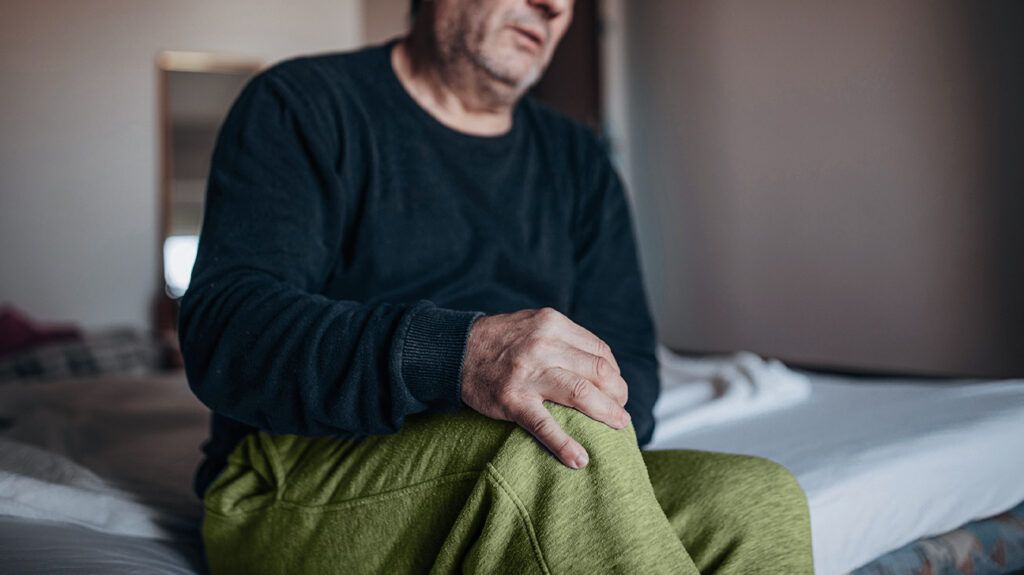Septic arthritis is an infection in the joint area. Alongside antibiotic treatment, minimally invasive or more major surgery could be part of a person’s treatment.
Sometimes, antibiotics are enough to clear an infection. Other times, a doctor may need to use surgical procedures alongside antibiotics to treat septic arthritis.
Procedures range from minor to more invasive. They usually aim to drain infected fluid, remove infected tissue, or both. Sometimes, a person may require a joint replacement or revision surgery.
This article explains when surgery is necessary for septic arthritis, types of surgery, recovery, and outlook.

Septic arthritis, or infectious arthritis, is joint inflammation due to an infection. While bacterial infection most commonly causes septic arthritis, viruses, fungi, and other pathogens can also cause it.
Septic arthritis is a serious condition that can result in irreversible damage. In some cases, it can be fatal. The mortality rate for infectious arthritis in hospitals is between
Treatment usually starts with antibiotics — either orally or intravenously. Doctors may need to drain the joint using needles and a syringe.
If these methods are not effective, surgery may be necessary to drain fluid and remove damaged or infected tissue. Some people may require an arthroplasty or joint replacement surgery.
Learn more about septic arthritis.
Below are some procedures doctors may use to help treat septic arthritis:
Arthrocentesis
Arthrocentesis is a minor procedure that involves removing fluid from the joint capsule with a thin, hollow needle.
A person is typically awake for this procedure. Before starting, a doctor may use a nerve block or administer medications for pain and anxiety.
During arthrocentesis, a doctor inserts a small needle attached to a syringe into the joint area and removes fluid. It may be necessary to repeat the procedure multiple times.
Arthroscopic surgery
Arthroscopic surgery is a minimally invasive surgery that involves small incisions and special equipment. It aims to remove infected tissue and clean and drain the joint.
Arthroscopy usually involves general or local anesthesia, depending on the case.
A surgeon will make a small incision and insert a thin tube with a camera and light to see the joint area. Using that same incision or others, they will then use special tools to remove any damaged tissue and clean the joint capsule. A drain might stay in the joint after surgery until drainage decreases.
Arthrotomy
An arthrotomy is an open procedure. It is more invasive than arthroscopic surgery but has similar goals.
During an arthrotomy, a person is usually under anesthesia.
Instead of using small incisions to insert a special camera, a surgeon will make a larger incision and examine the joint with their eyes. The surgeon will then remove damaged tissue and clean the area. They may also temporarily leave a drain within the joint.
Arthroplasty
If a person has an infection in artificial joints, they might need arthroplasty or joint replacement surgery.
There
A one-stage surgery involves removing the joint, cleaning the area, and inserting a new artificial joint all in one procedure.
Two-stage surgery involves two procedures. The first one typically clears the infection by removing the implant, cleaning out the joint, and inserting a spacer (a specialized device). Antibiotics usually follow. The second procedure inserts a new artificial joint.
Sometimes, a doctor may recommend arthroplasty for people with septic arthritis in natural joints. If the infection is permanent or has caused significant damage, this surgery type can be helpful.
Recovery after septic arthritis surgery can depend on many factors, including:
- the procedure a person has
- a person’s overall condition
- other individual factors
Sometimes, reoperation is necessary.
It can take weeks for a joint infection to clear with both surgical procedures and antibiotics. Treatment with antibiotics alone may take up to
Arthrocentesis — or drainage with a needle — has a very short recovery time and few complications. A doctor may repeat this procedure multiple times to help clear an infection.
After arthroscopic surgery, the incision heals in a few days, while an arthrotomy incision can take longer. It may take several weeks for a joint to recover fully. Both procedures usually entail monitoring and antibiotic treatment in the hospital afterward.
For two-stage arthroplasty, people may have to wait weeks for their infection to clear between stage one and stage two procedures. After a joint replacement, a person may need assistance with walking for several weeks.
Physical therapy and rehabilitation can be essential for recovery after any treatment for septic arthritis.
Many factors can affect a person’s outlook after surgery. These can include:
- the infection a person has
- how early a person receives a diagnosis
- co-occurring health conditions
Septic arthritis can cause permanent joint damage or death. However, some people do experience a full recovery after surgery.
Diagnosing and treating septic arthritis early plays an
When antibiotics alone cannot treat septic arthritis, a person may require surgery.
A doctor may use a needle and syringe to remove liquid from the joint capsule. Other times, a surgeon may use arthroscopic or open surgery to drain the joint and remove infected tissue.
Joint replacement surgery could be necessary for a person with infected artificial joints, permanent infection, or significant joint damage.
Depending on the type of surgery, it can take weeks for an infection to clear. While some people recover fully, others may have long-term joint damage. Early diagnosis and treatment, along with postsurgery physical therapy, are important for improving outlook.
